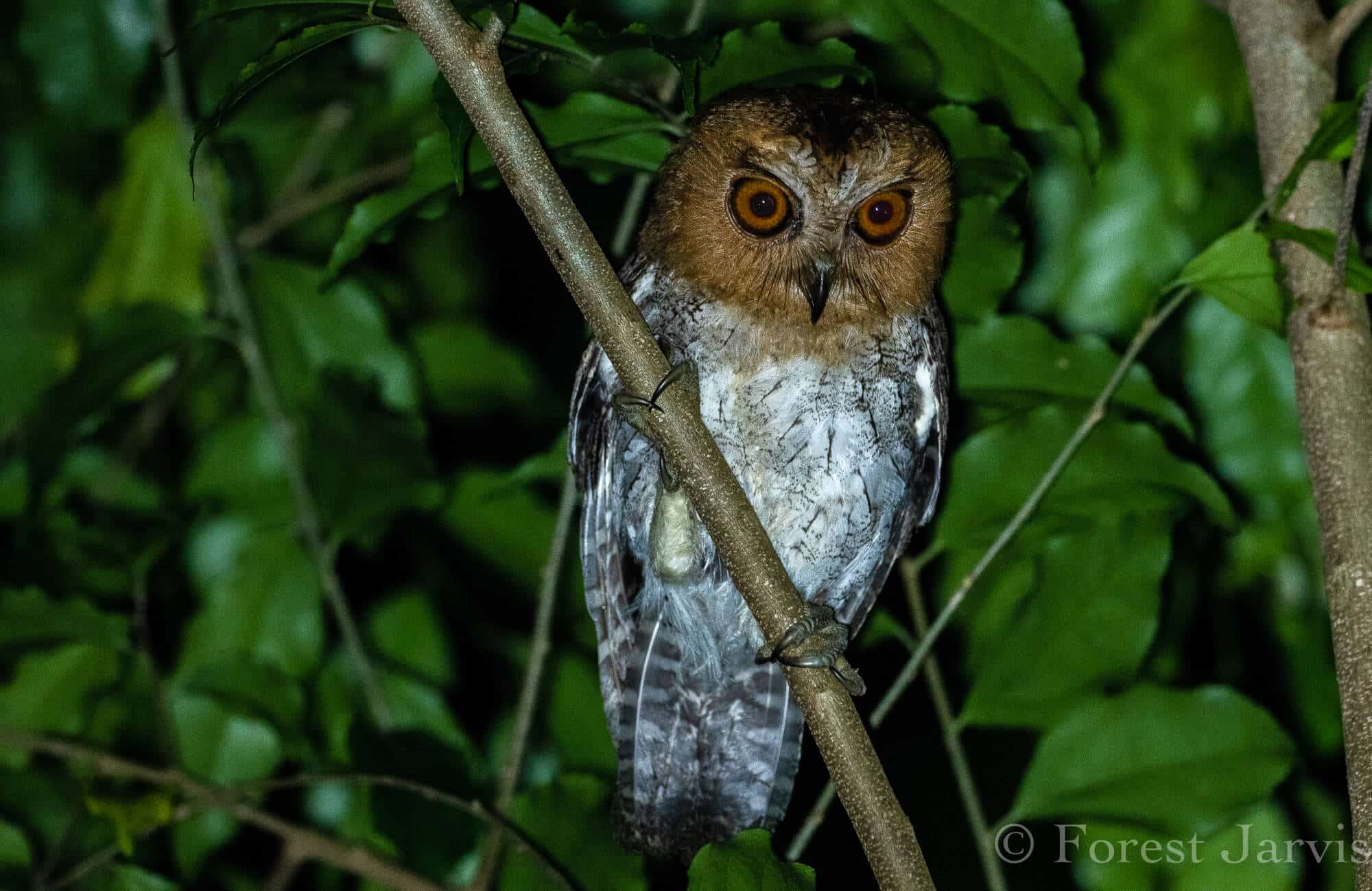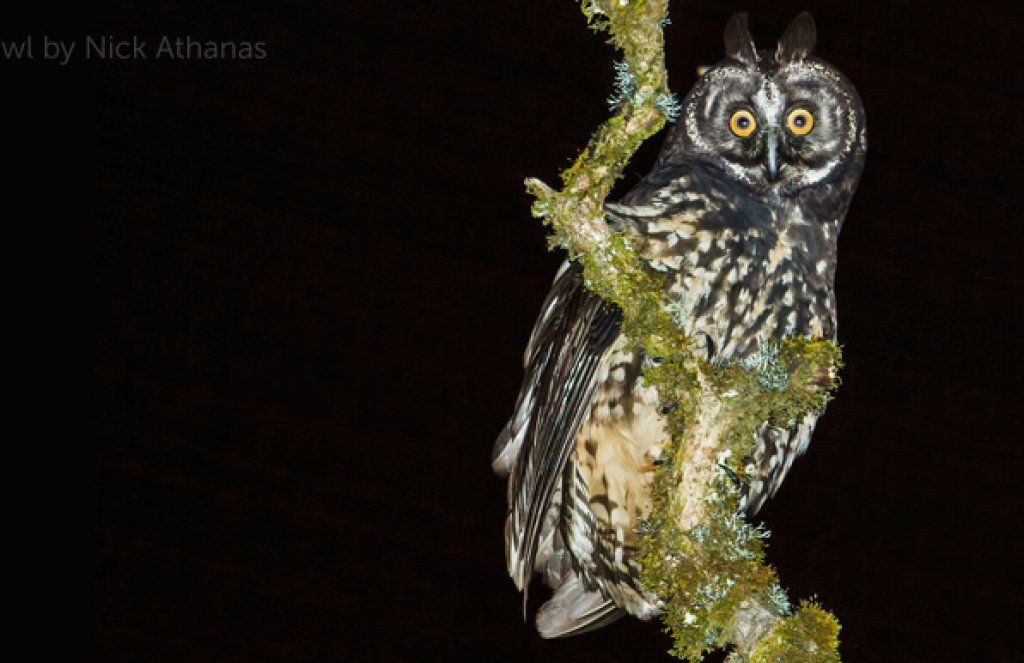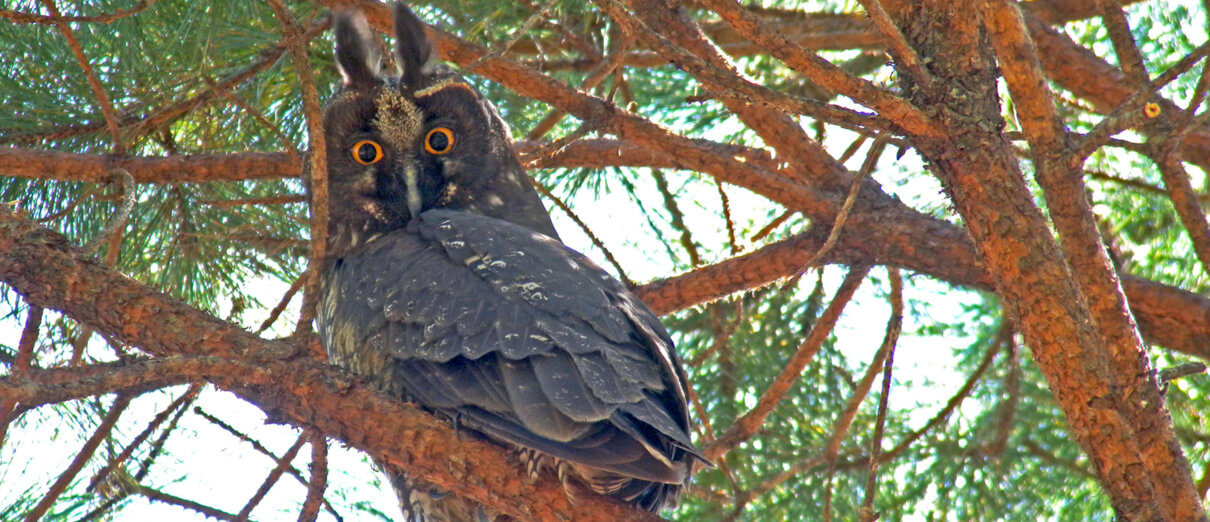Owls are mysterious birds that capture our imagination With their large, forward-facing eyes and silent flight, they seem almost supernatural One of the most intriguing traits of some owls are their glowing red eyes. But why do some owls have red eyes while others don’t? Let’s take a closer look at these fascinating birds.
What Causes Red Eyes in Owls?
An owl’s eyes are very large in proportion to its head, which gives them excellent vision. Their eyes are tube-shaped and immobile, so owls must turn their whole head to look around.
The eyes of most owls appear black or brown. But some species have eyes that range from orange to bright red. This red color is not caused by the eye itself, but by blood vessels at the back of the eye. These blood vessels reflect red light back through the retina, causing the eyes to glow red.
This effect is more noticeable when light shines directly into an owl’s eyes, like from a flashlight or streetlamp at night. During the day, the eyes appear much duller. But they may still show hints of orange or red tones.
Owls with Noticeable Red Eyes
Here are some of the most famous owls with red eyes:
Stygian Owl
The Stygian Owl lives in Central and South America. It has bright yellow eyes that reflect a vivid red at night, earning it the nickname “Devil Owl” Stygian Owls are medium-sized with dark brown plumage marked with streaks.
Long-Eared Owl
Several subspecies of the widespread Long-Eared Owl have orange or red eyes. Their eyes often glow a bright red when illuminated at night. These owls have distinctive ear tufts and mottled brown plumage that provides camouflage in the trees.
Eurasian Eagle-Owl
With its powerful talons and large size, the Eurasian Eagle-Owl looks intimidating even during daylight. But its piercing orange-red eyes seem to stare right through you at night. These owls thrive along the edges of forests and in rocky habitats across Europe and Asia.
Rock Eagle-Owl
Found in southern Asia, the Rock Eagle-Owl has distinctive bright orange-red eyes. As juveniles, these owls are snowy white before molting into tan and brown plumage as adults. They frequent hills and rocky outcrops.
Northern White-Faced Owl
In Africa, the Northern White-Faced Owl exhibits brilliant red eyes both day and night. These owls have highly effective camouflage. They can compress their feathers to appear smaller, or extend their wings to seem larger and more threatening.
Japanese Scops-Owl
Native to parts of Asia, the Japanese Scops-Owl has dark brown plumage and conspicuous orange-red eyes. At night, even the pupils of its eyes glow bright red when illuminated. This owl has an unusually varied vocal repertoire.
Red Eyes Aren’t Unique to One Species
As you can see, red eyes occur across a diverse range of owl species around the world. The trait evolved independently in many types of owls that fill different ecological niches.
For example, the Puerto Rican Owl is the only native owl species on that island. It has distinctive dark red eyes, unlike any other local bird.
Red eyes also appear in owls like the Pharaoh Eagle-Owl, Cape Eagle-Owl, Javan Scops-Owl, and Negros Scops-Owl. These owls live on separate continents and belong to different genera. But all share eyes that range from orange to bright red.
So if you spot glowing red eyes peering out of the darkness, don’t assume it’s one particular species. There are many types of mysterious red-eyed owls around the world waiting to be discovered.

More Birds Like This
Our 400+ detailed species profiles bring birds to life across the Americas with a focus on threats and conservation. Search the Library
- Population: Fewer than 2,400
- Trend: Decreasing
- Population: 12 million
- Trend: Decreasing
Your contribution will be matched dollar-for-dollar. Act by December 31!

- Scientific Name: Asio stygius
- Population: Unknown
- Trend: Decreasing
- Habitat: Open forests, including pine, pine-oak, and cloud forest; also open thorn scrub, urban parks

The Stygian Owl is one of the more mysterious members of an already elusive, often misunderstood family of birds. Its similar to a Long-eared Owl in structure, but the Stygian is larger and darker, with sooty-brown upperparts and heavy dark barring on its chest and belly. This owls vivid, orange-yellow eyes glow bright red when illuminated by artificial light, and with some creativity, its long, close-set ear tufts can appear to be horns.
Its eerie appearance gives the Stygian Owl an otherworldly aura, and some human observers associate owls, particularly this species, with evil and witchcraft. In Brazil, the Stygian Owl is known as “coruja-diabo,” or “mocho diablo” — the “devils owl.”
The word “Stygian” and the birds species name stygius conjure s of the dark and gloomy River Styx of Greek mythology. The souls of the dead had to cross this river on their way to the underworld of Hades. Although “stygian” may simply be a nod to the owls dark plumage, the association with the River Styx has given the bird an unfortunate connection to death and witchcraft, leading to unwarranted persecution.
In Cuba, this owl is called Siguapa, a name that is almost certainly related to Dominican folklore about a mythical creature called the Ciguapa, a frightening and dangerous being of the high mountains that has backward-facing feet and the body of a woman covered with long hair. It has been proposed that the legend was inspired by the Stygian Owl. However, curiously, people in the Dominican Republic do not know the owl as Ciguapa. It remains open to speculation how the similar words came to be used in both countries in presumably related, but different, ways. No matter how you cut it, when you hear the word Siguapa or Ciguapa, it means there is something spooky in the forest!
The Stygian Owl is widely, although sparsely, distributed in Mexico, Central and South America, and the Caribbean. It is nonmigratory, and six subspecies are currently recognized. Despite its broad distribution, this nocturnal bird is not often seen, and its biology remains little studied.
The Stygian Owl has a deep, hooting song, while the female utters a short, high-pitched “miah” when calling to a male. Listen here:
(Audio: Thiago Bicudo, XC144156. Accessible at www.xeno-canto.org/144156. Hans Matheve, XC154914. Accessible at www.xeno-canto.org/154914.)
Unlike most owl species, including the Barn Owl and Snowy Owl, the Stygian Owl eschews rodents, feeding chiefly on small birds and bats. It scans for prey from a perch, then swoops out, snatching birds from their nighttime perches and capturing bats mid-air. ABCs George E. Wallace recalls seeing a Stygian Owl in Cuba that was perched in a broad, rounded tree. Periodically, the bird cocked its ear sideways, then flew straight up into the air and out of sight — presumably hunting bats. The Stygian Owl will also take amphibians, such as frogs, and insects including grasshoppers, crickets, and beetles.

Much remains unknown about Stygian Owl breeding biology. The male has been observed clapping its wings under its body during courtship flights; the female usually nests in an abandoned stick nest of another bird, although this species sometimes nests on the ground like a Short-eared Owl. The female incubates the clutch of two eggs alone, while both parents contribute to feeding the downy young.
As with other owl species, the Stygian Owl is vulnerable to persecution by people who are unaware of the beneficial roles played by owls, including pest control. Habitat loss is another threat to this owl and many other birds.
ABCs BirdScapes approach to bird conservation helps to protect habitats throughout the Americas, including the forests Stygian Owls share with Neotropical migrant birds such as the Wood Thrush, Hooded Warbler, and Yellow-billed Cuckoo.
The Stygian Owl can be found at a number of reserves in ABCs Latin American Bird Reserve Network, ranging from El Dorado in Colombia to Abra Patricia in Peru. The latter reserve is home to another mysterious owl as well: the endemic, endangered Long-whiskered Owlet.
Donate to support ABCs conservation mission!
STYGIAN OWL ─ The Red Eyed Devil’s Owl
FAQ
What is the owl with red eyes?
Stygian Owl known for red reflection of their eyes that are often associated with the Devil.
Do Stygian owls really have red eyes?
The eye is shades of yellow, the bill blue-black to blackish, and the feet dark grayish or brownish pink. Its eyes may appear to be a shade of crimson under certain lighting due to their reflective nature.
Do owls eyes turn red?
This owl’s vivid, orange-yellow eyes glow bright red when illuminated by artificial light, and with some creativity, its long, close-set ear tufts can appear to be horns.
What wild bird has red eyes?
Some birds, such as the Common Loon, have red eyes in the summer and black eyes in the winter. Several duck species have red eyes. The American Coot sticks out as the red eyes contrast with the black plumage and white bill.
Which owl has red eyes?
Two of the most known species of owl with red eyes are the stygian owl and albino screech owl. The stygian owl or scientifically known as Asio stygius belongs to the family Strigidae which are found around Mexico, Cuba, and other places as well.
Why do owls have red eyes?
At night, its eyes reflect a red color under artificial light. This has also prompted its nickname of The Devil Owl. A species of Brazil, Paraguay, and Central American forests, this species has yellow eyes but they reflect red nuances at night. One reason why this owl is only associated with red and not yellow eyes is its nocturnal feeding habit.
Do long ear owls have red eyes?
The Long-Eared Owl living in The Canary Islands has the closest eye color to red nuances, even other subspecies can also have orange-red nuances. Yellow-orange and orange-red eyes are the most common on The Long-Eared Owl. An orange-red nuance is also specific to the reflections of its eyes during the night.
What do owl eyes look like?
Eye colour: Eyes are yellow or orangish-yellow in colour but if any light reflection happens in their eyes, the colour appears to be red. Certainly, if sunlight or any other light source falls on them, their eyes appear to be red coloured. Size: Small-sized owl like the size of a songbird. 16-25 cm in length.
Do eastern screech owls have red eyes?
Eastern screech owls can have red eyes, adding to their mysterious nocturnal appearance. These small, stocky owls are experts at camouflage and blend in with tree bark during the day, making their striking red eyes even more noticeable when they emerge at dusk. 14. Albino Ball Python Image Credit: Canva.
What does a long ear owl look like?
Yellow-orange and orange-red eyes are the most common on The Long-Eared Owl. An orange-red nuance is also specific to the reflections of its eyes during the night. Apart from its bright eyes, this owl also stands out with its elongated upward ear tufts. This species is found in deep and dense woodlands and may never be seen.
